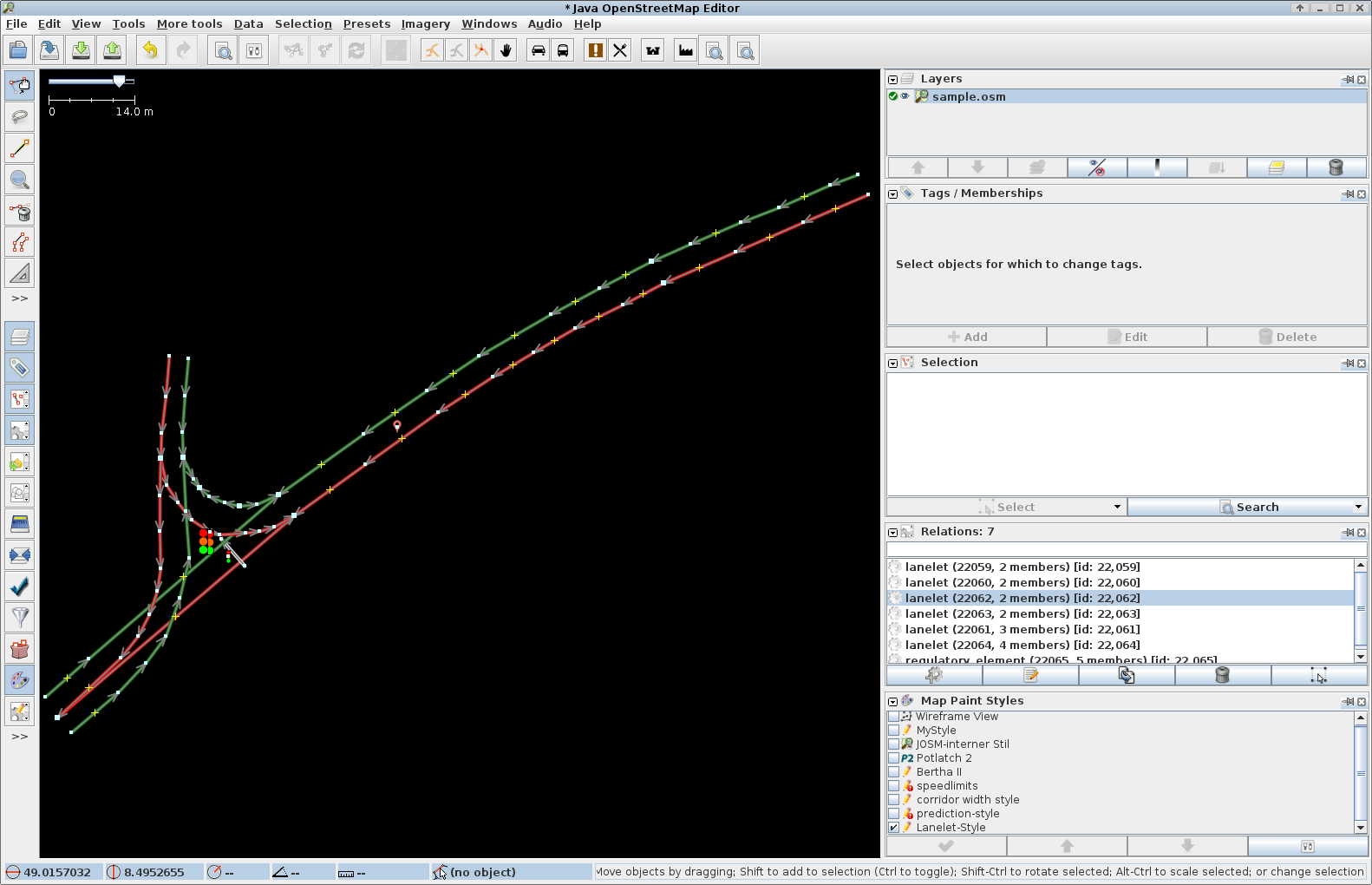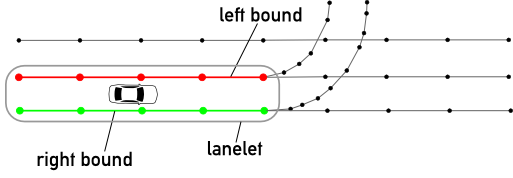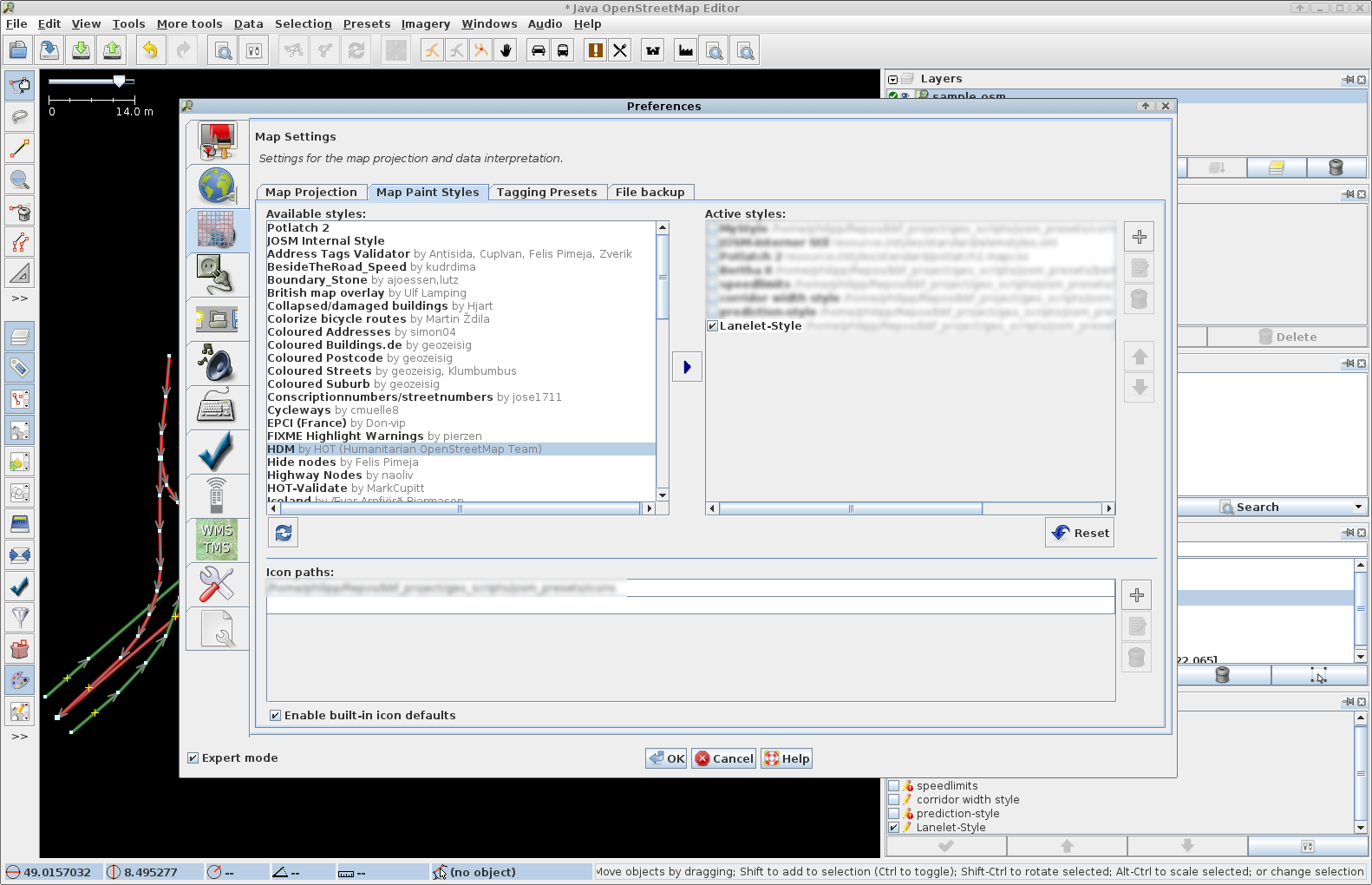lanelet2
Do you want to use lanelet maps in a new more structured way, well prepared for future autonomous driving applications?
There is lanelet2 released now. The successor of liblanelet (which will now be called lanelet1).
More here: https://github.com/fzi-forschungszentrum-informatik/Lanelet2
If you still use lanelet1, consider using the lanelet2 validator to check your maps for compatibility with lanelet2.
More info about the differences between lanelet1 and lanelet2 can be found here.
Lanelet maps [1] have been introduced in the context of the autonomous completion of the Bertha-Benz-Memorial-Route in 2013 [2].
The lanelet concept includes a map specification as well as an editing tool chain. The lanelet maps are built on top of
liblanelet(provided here)- the OpenStreetMap (OSM) file format [3]
- JOSM, the Java OSM editor [4]
- The RAILS port, which provides the OSM server [5]
osmosisto retrieve bigger portions of the map from the database [6]icmakermaking CMakeLists.txt files more readable [7]icl_coregiving nice logging features [8]
All components are open source so that users can profit from lanelet maps immediately.
Warning: Although the infractructure of OSM plays a key role in this toolchain, lanelet maps are not and will never be part of the OSM data base. So please do not upload your maps to the official OSM data base - instead, use the RAILS port and set up your own server where you can host your maps.
liblanelet is a library which
- parses OSM XML files
- builds the lanelet map
- provides access to the attributes of lanelets and regulatory elements
- allows routing through the graph
With version 1.1 a lot of new features arrived. Some of them are:
- support for lanelet center lines
- new projection and localization methods
- request methods for neighbouring lanelets
- request methods for possible routes from a given lanelet
- support for parking spaces
- routing from and to parking spaces
- export of lanelet maps
- lanelet graph export for visualization in josm and graph editors
It is licensed under BSD. See the LICENSE.md file for more details.
- Follow the install instructions given in the INSTALL.md file (especially about the depedencies) and this video
- Make a map and parse it with liblanelet (there is a video as well)
- Use
liblaneletin your software. A good point to start is demo.cpp as well as the test cases in lanelet_tests.cpp.
Additionally, the archive contains a JOSM style file as well as the corresponding icons. To activate the style in JOSM,
- press
F12to get into the configuration dialog - in the third tab (titled settings for the map projection), go to Map Paint Styles and press the
+to add the style sheet. In the area below, append the icon directory to the list.

A screenshot of JOSM. The coloring scheme of the bounds is consistent with the paper: red for left bounds, green for right bounds.
Don't forget to configure JOSM to use your OSM server instead of the official one.
- The thing with the OSM-IDs
- JOSM does not know about global IDs. So when you create new elements, they will have a negative ID which indicates that the element is not known
to the OSM server (your server). As soon as this element is uploaded, the server will assign a globally unique ID which is stable at least
during the element's life. Until then, JOSM displays 0 as ID unless you hange osm-primitives.showid.new-primitives to true in
Preferences/[x] Expert mode/Advanced Preferences. - The thing with the node identity
- Points (or better nodes) are considered identical if they have the same ID. It is not sufficient to place two different points near each other. Usually this causes trouble with lanelet adjacency.
- Why not use the OSM server?
- OSM refers to two things: the collected data and the agreement of the community on how to map and what to map, and the infrastructure part, which is the file format, the tile structure, editing software and the database. Lanelet maps build on top of the infrastructure part. They are meaningless to OSM mappers and uploading your maps to official OSM servers will cause trouble.
- Bender, J. Ziegler, D. Nienhüser, E. Ward, F. Kuhnt, S. Klemm, R. Kohlhaas and many more
| [1] |
|
| [2] | http://www.kit.edu/besuchen/pi_2013_13901.php |
| [3] | http://wiki.openstreetmap.org/wiki/OSM_XML |
| [4] | https://josm.openstreetmap.de/ |
| [5] | https://wiki.openstreetmap.org/wiki/The_Rails_Port |
| [6] | http://wiki.openstreetmap.org/wiki/Osmosis |
| [7] | https://github.com/fzi-forschungszentrum-informatik/icmaker |
| [8] | https://github.com/fzi-forschungszentrum-informatik/icl_core |

